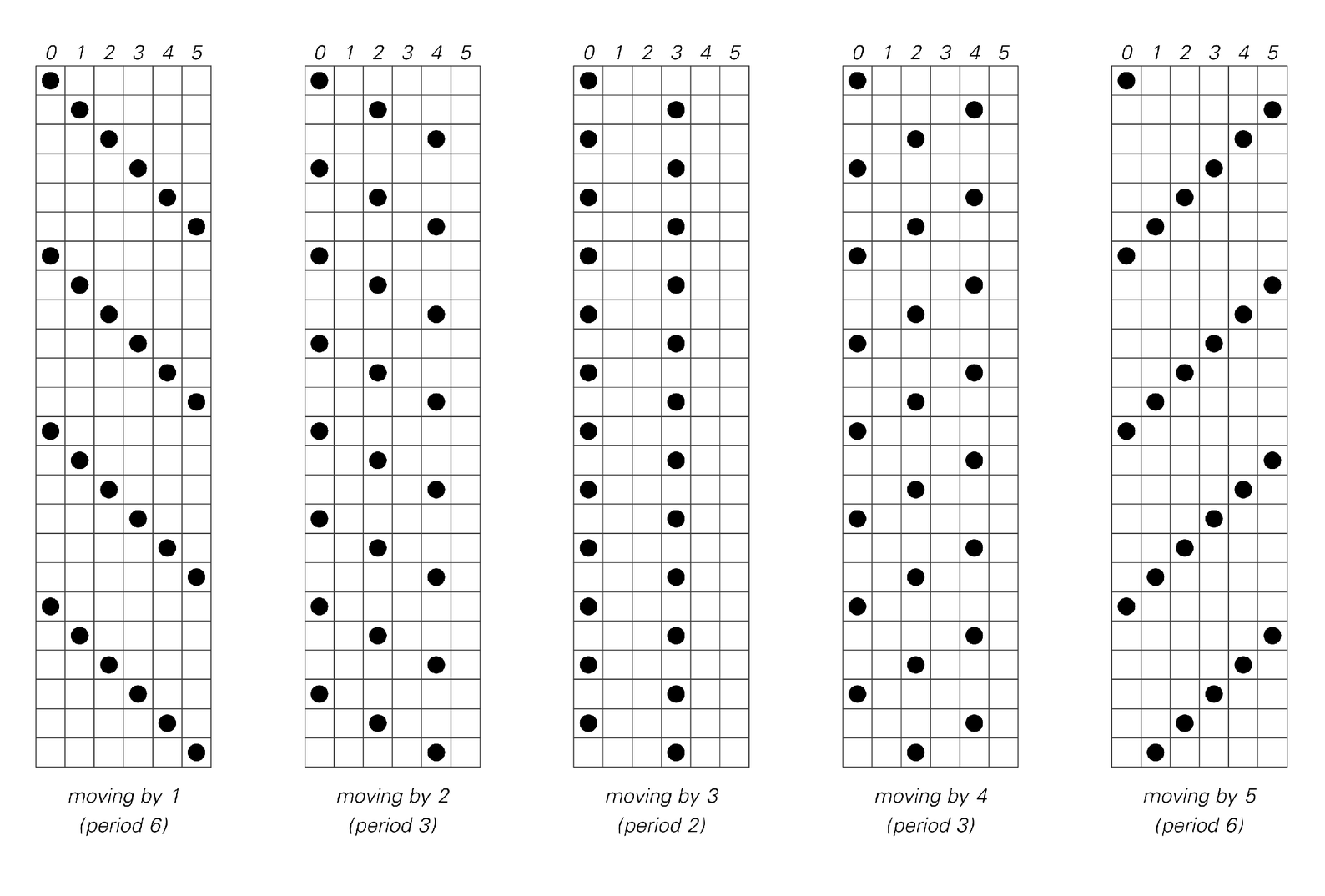Systems of Limited Size and Class 2 Behavior
In the past two sections [2, 3] we have seen two important features of class 2 systems: first, that their behavior is always eventually repetitive, and second, that they do not support any kind of long-range communication.
So what is the connection between these two features?
The answer is that the absence of long-range communication effectively forces each part of a class 2 system to behave as if it were a system of limited size. And it is then a general result that any system of limited size that involves discrete elements and follows definite rules must always eventually exhibit repetitive behavior. Indeed, as we will discuss in the next chapter, it is this phenomenon that is ultimately responsible for much of the repetitive behavior that we see in nature.
The pictures below show a very simple example of the basic phenomenon. In each case there is a dot that can be in one of six possible positions. And at every step the dot moves a fixed number of positions to the right, wrapping around as soon as it reaches the right-hand end.

A simple system that contains a single dot which can be in one of six possible positions. At each step, the dot moves some number of positions to the right, wrapping around as soon as it reaches the right-hand end. The behavior of this system, like other systems of limited size, is always repetitive.



